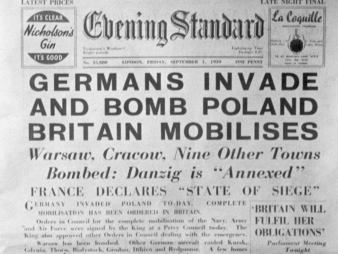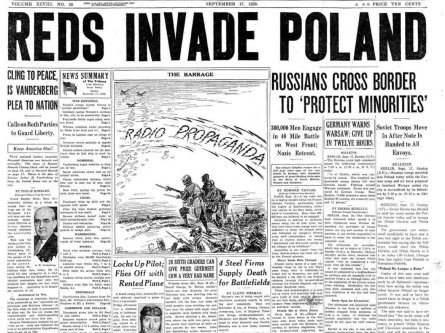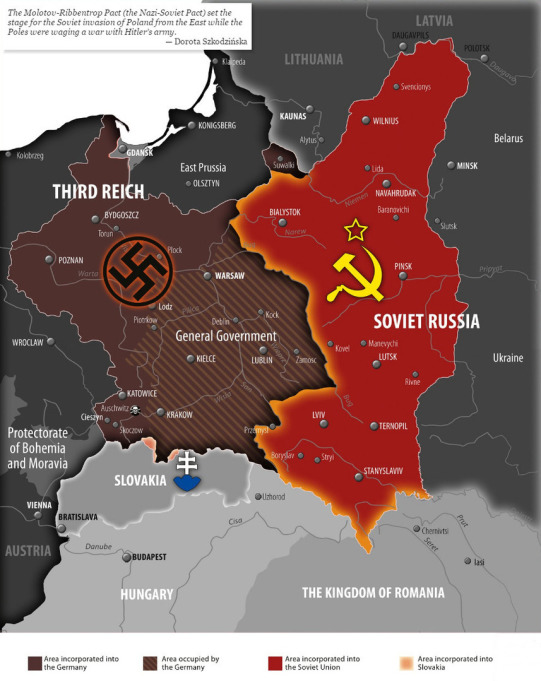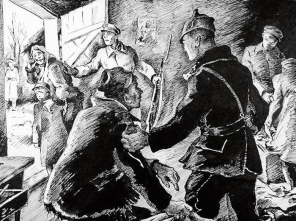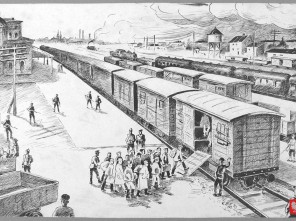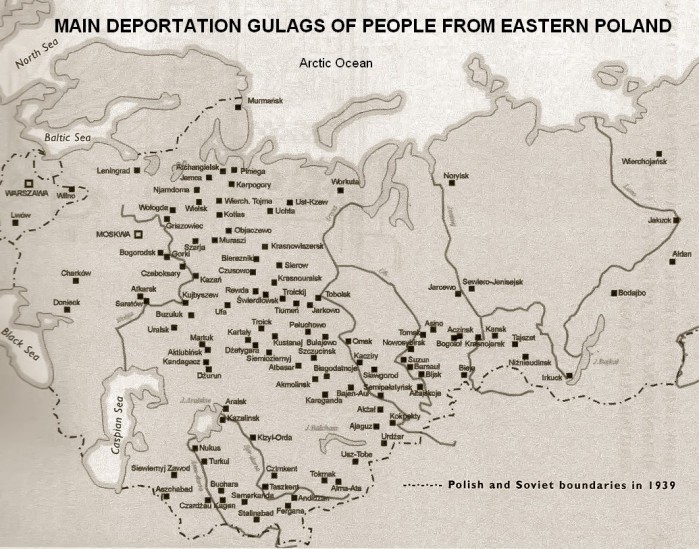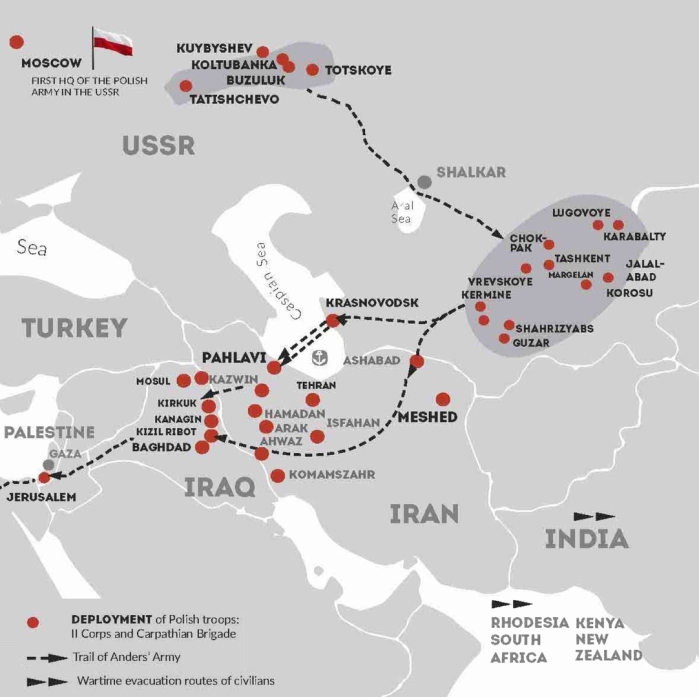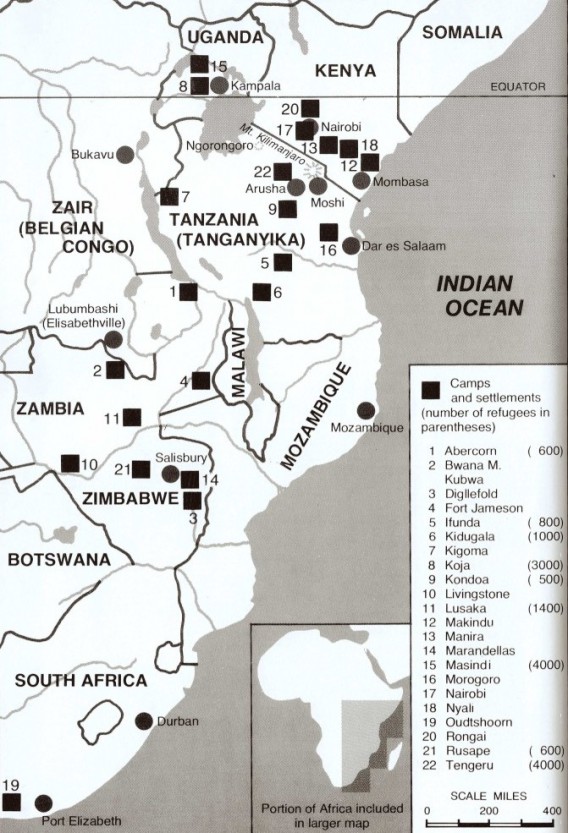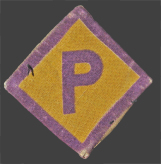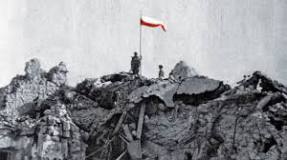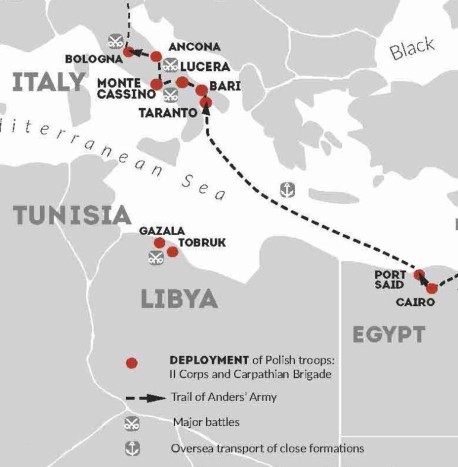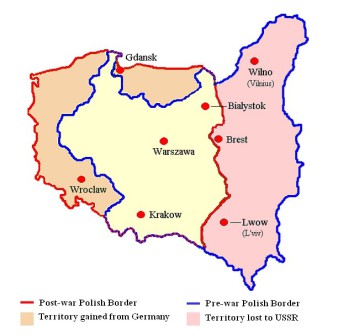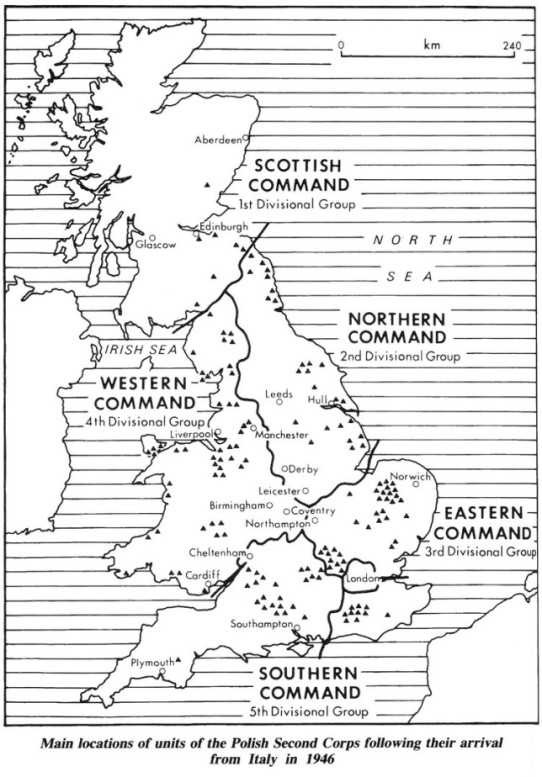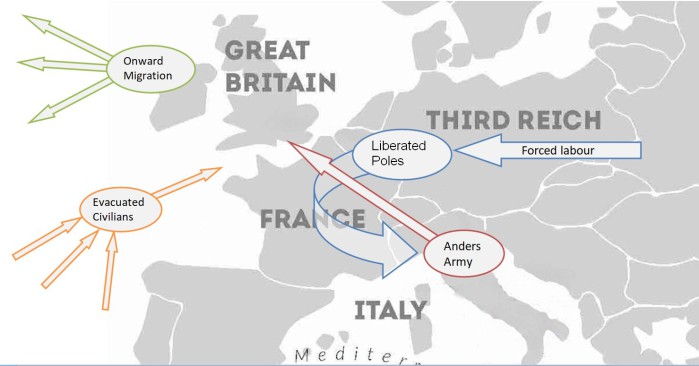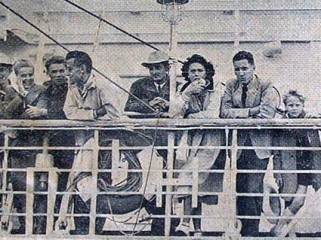Why and How the Poles Came to Marsworth
By Tony Gabis
The images in this article have been sourced and adapted from many websites. If you have any queries or comments, please email marsworth.hostel@gmail.com
The Poles who settled in the UK in the immediate post-war years came to the UK as a result of three main wartime events:
- The German and the Russian Invasions of Poland.
- The German Invasion of Russia.
- The Defeat of Germany.
Each of these events resulted in large movements of people and countless individual stories, the essence of which is described below. Estimates made by historians do vary, therefore any numbers given are intended only as a guide.
German and Russian Invasions of Poland
Whilst it is generally known that Germany invaded Poland from the west on 1st September 1939, it is less well known that the Russians invaded Poland from the east just 17 days later in a pre-arranged pact between the Germans and Russians to divide Poland between them.
Map showing Poland divided between Germany and Russia
Evacuation to the West
When it became clear that Poland’s forces faced overwhelming odds, Polish commander-in-chief Marshal of Poland Edward Rydz-Śmigły ordered about 100,000 Polish troops to evacuate through Romania and Hungary to France where Polish Army and Air Force units were re-established. The Polish Navy was ordered to withdraw to British ports and assist the British Royal Navy.
When Germany attacked France, the Polish Forces were evacuated to Britain from where they subsequently took part in various operations including Narvik, Tobruk and Arnhem. Perhaps better known is the role of Polish pilots in the Battle of Britain. Polish Bomber Squadrons also operated out of Lincolnshire.
Deportation to Siberia
In February 1940, the Russians started to systematically dismantle the Polish state and purge it of anyone they perceived to be a threat. These included the military, civil servants, teachers, the intelligentsia and landowners, along with some very ordinary people who got caught up in this crude purge.
Tens of thousands of military officers were shot in cold blood and buried in mass graves.
As part of this purge, about a million - some say as many as two million - men, women and children were given a short time to pack a few belongings and provisions before being taken away and crammed into cattle trucks to be deported to labour camps several hundreds - or even thousands - of miles away in Siberia.
Some journeys took several weeks under intolerable conditions and many died on the way.
When they arrived at the camps, they had to live in poor, often freezing conditions and were put to work in mines, on farms or in logging camps, only being allowed to stop work when the temperature reached -50 degrees. Many died, especially the very young and old.
German Invasion of Russia
In June 1941 Germany broke their pact with Russia and attacked the Soviet Union. This act brought Russia to side with the Allies.
Formation of Anders’ Army
In August 1941 agreement was reached between the Polish government in exile in London and the Soviet Union to free the Poles from Siberia and to allow them to form a Polish army under the leadership of General Anders. The army was initially established in Totskoye to the east of Moscow before moving to Iran via Kazakhstan, Uzbekistan and Turkmenistan. Although they were now free, the Siberian Poles were given little or no travel assistance. They had to make their own way to join Anders' army, with entire families often walking hundreds of miles.
Routes taken by Poles freed from Siberia to the Middle East and to other parts of the world
Of the million or so Poles in Siberia, only about 79,000 soldiers and 37,000 civilians made it to Iran. Some were unable to travel and remained behind; many died on the way.
Anders’ Army was deployed initially to the Middle East, where male teenagers who were too young to fight went into training as army cadets and young women trained as nurses or in administrative roles.
The civilians, mainly women and children, were evacuated to British colonies in Africa, India, the Middle East and Australasia. Other countries also helped, with some even being taken to Mexico.
The map below shows the location of Polish refugee camps in Africa, where some future Marsworth residents spent the remainder of the war.
Click here to learn more about how East Africa became home for Polish exiles (Link opens on another website)
Forced Labour in Germany
Forced labour in Germany started with the German invasion of western Poland, but following the German invasion of Russia, which stretched German resources,
millions more Poles
and other nationalities were taken to Germany to work as forced labourers.
In the same way that Jews had to wear a Star of David to identify them, Poles had to wear the badge shown on the right.
The Italian Campaign
Defeat of Germany
So far this account has dealt with the dispersal of Poles around the world as a result of the war. The end of the war led to some of those dispersed Poles being brought together again in Great Britain. This is how it happened.
At the end of the war Poland was occupied by the Russians, while a large Polish Army remained in northern Italy.
It was not safe for Poles to return home to Russian-occupied Poland, where they would face deportation to Siberia again or worse.
For many their homeland in Eastern Poland had been absorbed into the Soviet Union as borders were redrawn at the Yalta Conference in February 1945.
The author’s father was given this succinct advice in a letter received from a cousin:
“If you have bread and a roof over your head,
stay where you are.”
Resettlement of Poles in Great Britain
As the war drew to an end, Anders' army continued to grow, its ranks being swelled by Poles liberated from Germany by the Allies. These included forced labourers, POWs and Poles who had been conscripted into the German army because of German ancestry. The continuing growth of this army presented an increasingly difficult political problem for the Allies. The problem was resolved in May 1946 by the British government's decision to bring the Polish Army in Italy to Britain.
Once in Britain the soldiers were enlisted into a Polish Resettlement Corps (PRC). They signed up for two years and remained under military discipline until they found work and were discharged into civilian life. They were stationed in about 200 military bases that had become surplus to requirements after the war.
Although the bulk of the Polish Army in Italy came to Britain in the second half of 1946, the PRC continued to grow in 1947 as other Polish military units, e.g. from the Middle East were brought to Britain. In the same year, Parliament passed the Polish Resettlement Act which provided financial, welfare and educational support for Poles seeking refuge in the UK. Between 1947 and 1950 women and children who had been evacuated to parts of the British Empire were also brought to Britain. In addition to the 200 military hostels previously mentioned there were about 50 hostels that were more family oriented. Marsworth was one of these. In addition to Marsworth, other hostels could be found locally at Wing, Great Missenden, Amersham and High Wycombe, for example.
Click here to learn more about the Polish Resettlement Act and resettlement process (Link opens on another website.)
Through the course of the 1950s and early 1960s the Poles gradually moved out of the hostels and began living independently. However, not everyone chose to stay in Great Britain - some migrated further afield to countries like the USA, Canada and Argentina.
The final legs of journies to Britain and onward migration
Arrivals in Britain by Ship
Large numbers of Polish troops were transported from Italy by train before crossing the Channel by ship and arriving in Britain in 1946 and early 1947. Detailed information about these troop movements are either not available or have not been located.
Civilians and children that had been evacuated to places like Africa and India made longer journeys to Britain by ship. Many of these journeys took place in 1948, but continued until 1950. Passenger lists can often be found for civilians. They enable their descendants to find out exactly when and how their forbears arrived in Britain.
Some Poles getting their first glimpse of Britain
Sometimes passenger lists recorded not only people's names but also their ultimate destination in the UK. Marsworth is mentioned on the passenger lists for two specific voyages. Details of these can be seen via the following links, which open on Zosia and Jurek Biegus's excellent website about Polish Resettlement:
SS Oxfordshire arriving in Hull on 22nd of July 1950
SS Dundalk Bay arriving in Hull on 1st September 1950
The following link leads to information about many more ships and voyages:
Ships and Passenger Lists of Polish WW2 DPs arriving from Africa and Europe
More about the Poles coming to the UK
Zosia and Jurek Biegus's website is a valuable source of information about Polish Resettlement Camps in general. Here are some sample links.
More about the Poles coming to Marsworth
Detailed stories of how specific families and individuals came to Marsworth

